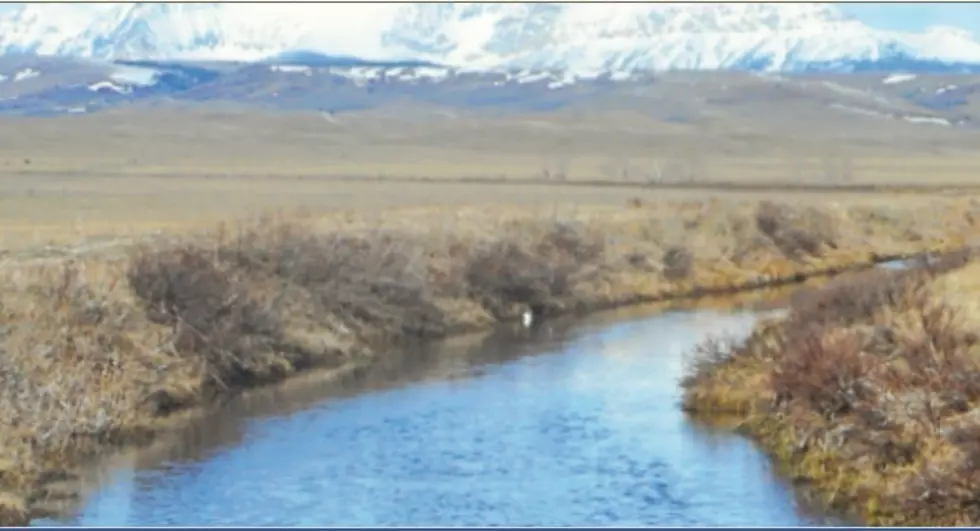
History of Sisk Ranch
Compiled by Geneva R. Sisk, 2014
The Sisk Ranch, located south and east of Galata, Montana, originated in 1910, with 160 acres claimed as a homestead filed by Joe Nat Sisk. The official Homestead Act papers show the year 1911, and signed by President Woodrow Wilson. This Act gave settlers free land to establish homesteads in the West.
The Joe and Margaret (Bibb) Sisk family came from Missouri, via Washington State, where they had also homesteaded, after their marriage in 1898. They chose their home site on Willow Creek, which provided water for house, animals and Margaret's garden.
Joe added acreage to the ranch when many homesteaders sold out and moved away. He was a "lively" auctioneer, as the story goes. Often-times purchased land with his auction income. In the early years, Maragret lived in Great Falls with the children and earned money playing organ and piano for silent movies.
Joe's brother, George also acquired land south of Galata, next to the Bootlegger Trail, and they worked together with farming wheat and raising sheep and cattle.
Joe and Margaret's family were Mary Jo, Robert (Bob) and Ben. Mary Jo, at age 16, taught at the Wilson School, south of Lothair, and married the Lothair Banker, Richard Stillie. They and son, Joe, later moved to Modesto, California, where several other members of the Washington Sisks had settled.
In the early days Galata was the main shipping point for ranchers to send their cattle by rail to sell at the Chicago Stockyards. Generally an owner would ride the train with his cattle and in 1933 Bob accompanied their cattle to sell. On this trip he made the acquaintance with a lady named Catherine Lawless. In 1934 they were married and "Cathie" experienced Montana-she had never been West and most dating has been over the one telephone available in Galata. Cathie was a milliner-a person who made hates for ladies, which of course at that time was a necessary item in ladies attire.
Bob and Chathie, with their two children, Bob Jr. and Joanne, lived at the ranch and in 1947 Joe and Margaret retired and purchased a house at 801 Main Street in Shelby. (this house is still in the Sisk family).
When Tiber Dam was built in 1953, the Ranch sold 960 acres to the Bureau of Reclamation as Lake Elwell would flood the Willow Creek drainage. The original homestead house was purchased and moved to Shelby by Kenny Nassett, where it still stands. Bob and Cathie built a new house further East near the Toole-Liberty County line and established farm buildings and corrals, still farming wheat, barley and raising cattle. Using the purchased water, pumped from Lake Elwell, the first field of hand-moved irrigation system was put in.
Ben had acquired the George Sisk place and farmed with his wife, Fern (Frank) Sisk. Their children, Georgia (Nelson) and Sue (Fritz), with cousins Bob Jr. and Joanne, shared many farm years together.
In 1960, Ben sold his land to Bob Jr. and Geneva (Rohr) Sisk, and they joined this with the original place. Bob and Cathie retired to Shelby and the Shelby House. Along with the grain crops, and cattle, a wheel-move irrigation system for alfalfa hay was added, and the first field of sainfoin was grown these years.
Bob and Geneva's children are the fourth generation of Sisks, Joe, Helen (Brown), Patty (Goodmundson), Ben and Robyn (Hoggatt).
In 1984, Joe and Lore (Zurn) joined the Ranch, where Amie (Hogsett) and Derek were raised. Derek and his wife, Heidi (Hedstrom) have chosen to farm and ranch with us now, making the fifth generation on the Sisk Ranch.
Many changes have been made in the last 40-50 years. Larger machinery, CRP-in and out, more rental land acquired and the irrigation system has been expanded to circle pivots. Other crops, including peas, lentils, and canola have been added to the grain menu, with the wheat and barley. Black Angus cattle are still branded with the Lazy S 4 brand.
More From K96 FM









